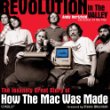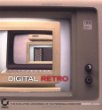Do you enjoy reading and learning about the history of video games? If you are into retro gaming, or even vintage computing, then here is a list of the best books about video game history - enjoy!
From Amazon.com: "In the early 1970s, while Silicon Valley was designing the latest generation of digital wristwatches and pocket calculators, a ragtag group of college dropouts, hippies, and electronics hobbyists were busy creating the future in their garages. What they built was the personal computer, but what they were aiming for was something much more ambitious: a revolution. Fire in the Valley is the story of their efforts, and in particular, the contributions of an informal think tank called the Homebrew Computer Club. Its technically gifted community, comprising sci-fi aficionados and Berkeley counterculturists, believed computers could usher in an age of human empowerment, perhaps even a utopia."
From Amazon.com: "Personal computers grew out of a hobbyist movement in the 1970s, as some began experimenting with the new microchips, building their own computers. Kit computers appeared, available from small mail order companies, but the computer that brought a wider audience to personal computing was the TRS-80 Model I, introduced by Tandy Corporation in August 1977. It was the first complete mass market, off-the-shelf microcomputer that anyone could buy for $599.95. And it was available at 3500 Radio Shack stores nationwide."
From Amazon.com: "Filled with first-hand accounts of ambition, greed, and inspired engineering, this history of the personal computer revolution takes readers inside the cutthroat world of Commodore. Before Apple, IBM, or Dell, Commodore was the first computer manufacturer to market its machines to the public, selling an estimated 22 million Commodore 64s. Those halcyon days were tumultuous, however, owing to the expectations and unsparing tactics of founder Jack Tramiel. Engineers and managers with the company between 1976 and 1994 share their memories of the groundbreaking moments, soaring business highs, and stunning employee turnover that came with being on top in the early days of the microcomputer industry. This updated second edition includes additional interviews and first-hand material from major Commodore figures like marketing guru Kit Spencer, chip designer Bill Mensch, and Commodore co-founder Manfred Kapp."
From Amazon.com: "In the 1970s and '80s, Xerox Corporation brought together a brain-trust of engineering geniuses, a group of computer eccentrics dubbed PARC. This brilliant group created several monumental innovations that triggered a technological revolution, including the first personal computer, the laser printer, and the graphical interface (one of the main precursors of the Internet), only to see these breakthroughs rejected by the corporation. Yet, instead of giving up, these determined inventors turned their ideas into empires that radically altered contemporary life and changed the world."
From Amazon.com: "This engaging history covers modern computing from the development of the first electronic digital computer through the dot-com crash. The author concentrates on five key moments of transition: the transformation of the computer in the late 1940s from a specialized scientific instrument to a commercial product; the emergence of small systems in the late 1960s; the beginning of personal computing in the 1970s; the spread of networking after 1985; and, in a chapter written for this edition, the period 1995-2001."
From Amazon.com: "The book traces the development of the Macintosh, from its inception as an underground skunkworks project in 1979 to its triumphant introduction in 1984 and beyond."
From Amazon.com: "Long ago, in 1985, personal computers came in two general categories: the friendly, childish game machine used for fun (exemplified by Atari and Commodore products); and the boring, beige adult box used for business (exemplified by products from IBM). The game machines became fascinating technical and artistic platforms that were of limited real-world utility. The IBM products were all utility, with little emphasis on aesthetics and no emphasis on fun. Into this bifurcated computing environment came the Commodore Amiga 1000. This personal computer featured a palette of 4,096 colors, unprecedented animation capabilities, four-channel stereo sound, the capacity to run multiple applications simultaneously, a graphical user interface, and powerful processing potential."
From Amazon.com: "This 25th anniversary edition of Steven Levy's classic book traces the exploits of the computer revolution's original hackers -- those brilliant and eccentric nerds from the late 1950s through the early '80s who took risks, bent the rules, and pushed the world in a radical new direction. With updated material from noteworthy hackers such as Bill Gates, Mark Zukerberg, Richard Stallman, and Steve Wozniak, Hackers is a fascinating story that begins in early computer research labs and leads to the first home computers."
From Amazon.com: "This book tells the story behind 40 classic home computers of an infamous decade, from the dreams and inspiration, through passionate inventors and corporate power struggles, to their final inevitable demise. It takes a detailed look at every important computer from the start of the home computer revolution with the MITS Altair, to the NeXT cube, pehaps the last serious challenger in the personal computer marketplace."
From Amazon.com: "An unprecedented combination of computer history and striking images, Core Memory reveals modern technology's evolution through the world's most renowned computer collection, the Computer History Museum in the Silicon Valley. Vivid photos capture these historically important machinesincluding the Eniac, Crays 13, Apple I and IIwhile authoritative text profiles each, telling the stories of their innovations and peculiarities. Thirty-five machines are profiled in over 100 extraordinary color photographs, making Core Memory a surprising addition to the library of photography collectors and the ultimate geek-chic gift."
From Amazon.com: "This comprehensive field guide is invaluable for identifying and pricing more than 700 microcomputers made worldwide between 1971 and 1993. It's filled with over 340 photos and up-to-date information for collectors who want to fully enjoy this rapidly emerging hobby. Featured are early hobbyist computers, desktop business/professional computers, home computers, PC-compatibles, transportable computers, laptops, and notebook computers. They're all arranged alphabetically by manufacturer to aid in quick identification. Fascinating historical notes and anecdotes make this book a great read! Collectors will find advice for locating and evaluating micros, a glossary of computing terms, and a great list of resources. A must-have for everyone interested in vintage computers!"
Do you know any other good books about personal computer history? If so, let me know and I'll add them to the list!
(Updated on 11/08/2024 to remove affiliate links. This article originally posted on March 6, 2012 on whitehole.net)

 Fire in the Valley: The Making of The Personal Computer by Paul Freiberger and Michael Swaine.
Fire in the Valley: The Making of The Personal Computer by Paul Freiberger and Michael Swaine. Priming the Pump: How TRS-80 Enthusiasts Helped Spark the PC Revolution by David Welsh and Theresa Welsh.
Priming the Pump: How TRS-80 Enthusiasts Helped Spark the PC Revolution by David Welsh and Theresa Welsh. Commodore: A Company on the Edge by Brian Bagnall.
Commodore: A Company on the Edge by Brian Bagnall. Dealers of Lightning: Xerox PARC and the Dawn of the Computer Age by Michael A. Hiltzik.
Dealers of Lightning: Xerox PARC and the Dawn of the Computer Age by Michael A. Hiltzik. A History of Modern Computing by Paul E. Ceruzzi.
A History of Modern Computing by Paul E. Ceruzzi. Revolution in The Valley: The Insanely Great Story of How the Mac Was Made by Andy Hertzfeld.
Revolution in The Valley: The Insanely Great Story of How the Mac Was Made by Andy Hertzfeld. The Future Was Here: The Commodore Amiga by Jimmy Maher.
The Future Was Here: The Commodore Amiga by Jimmy Maher. Hackers: Heroes of the Computer Revolution by Steven Levy.
Hackers: Heroes of the Computer Revolution by Steven Levy. Digital Retro: The Evolution and Design of the Personal Computer by Gordon Laing.
Digital Retro: The Evolution and Design of the Personal Computer by Gordon Laing. Core Memory: A Visual Survey of Vintage Computers by John Alderman and Mark Richards.
Core Memory: A Visual Survey of Vintage Computers by John Alderman and Mark Richards. Collectible Microcomputers by Michael Nadeau.
Collectible Microcomputers by Michael Nadeau.